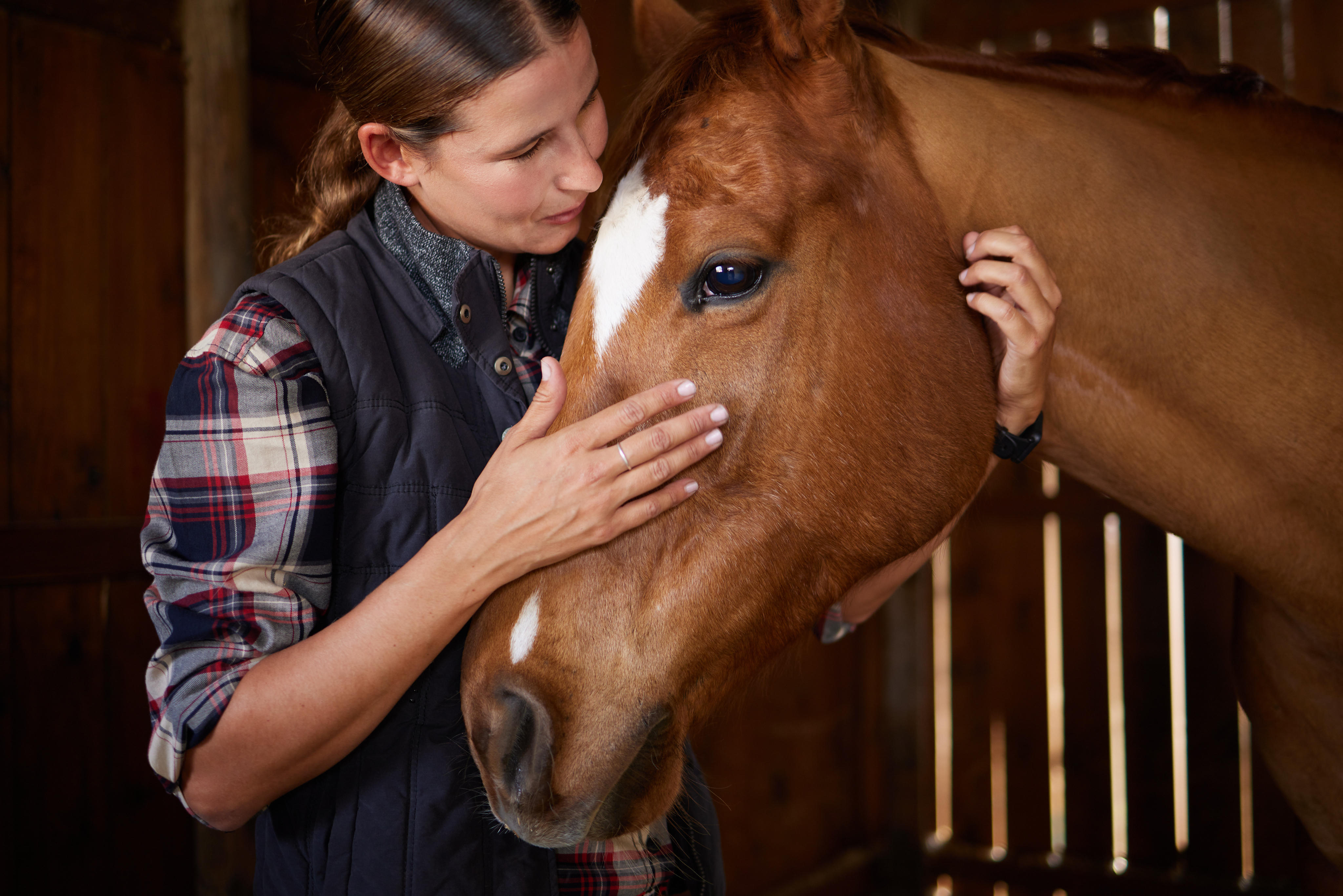BRAVECTO® Clinical Studies
Published Clinical Studies
View and download recent clinical studies to stay up-to-date and educated on the proven difference of BRAVECTO.
Fluralaner activity against life stages of ticks using Rhipicephalus sanguineus and Ornithodoros moubata IN in vitro contact and feeding assays
Abstract Background: Fluralaner is a novel isoxazoline eliciting both acaricidal and insecticidal activity through potent blockage of GABA- and glutamate-gated chloride channels. The aim of the study was to investigate the susceptibility of juvenile stages of common tick species exposed to fluralaner through either contact (Rhipicephalus sanguineus) or contact and feeding routes (Ornithodoros moubata). Methods: Fluralaner acaricidal activity through both contact and feeding exposure was measured in vitro using two separate testing protocols. Acaricidal contact activity against Rhipicephalus sanguineus life stages was assessed using three minute immersion in fluralaner concentrations between 50 and 0.05 μg/mL (larvae) or between 1000 and 0.2 μg/mL (nymphs and adults). Contact and feeding activity against Ornithodoros moubata nymphs was assessed using fluralaner concentrations between 1000 to 10−4 μg/mL (contact test) and 0.1 to 10−10 μg/mL (feeding test). Activity was assessed 48 hours after exposure and all tests included vehicle and untreated negative control groups. Results: Fluralaner lethal concentrations (LC50, LC90/95) were defined as concentrations with either 50%, 90% or 95% killing effect in the tested sample population. After contact exposure of R. sanguineus life stages lethal concentrations were (μg/mL): larvae – LC50 0.7, LC90 2.4; nymphs – LC50 1.4, LC90 2.6; and adults – LC50 278, LC90 1973. After exposure of O. moubata nymphs to fluralaner lethal concentrations were (μg/mL): contact exposure – LC50 720, LC95 1133; and feeding exposure- LC50 0.00007, LC95 0.09. Conclusions: Fluralaner demonstrates potent in vitro acaricidal activity against all life stages of the brown dog tick, R.sanguineus. The testing of fluralaner contact and feeding routes using O. moubata nymphs demonstrates a high acaricidal activity in both exposure routes. Keywords: Rhipicephalus sanguineus, Ornithodoros moubata, Fluralaner, Acaricide activity, Tick life stages Read more about this study here
Flea and tick treatment satisfaction, preference, and adherence of dog owners in the Unites States, United Kingdom, and Australia who treated their dog with fluralaner
Abstract Background: An extended duration flea and tick medication of the isoxazoline class (fluralaner) was introduced in 2014 in the United States and other countries. A survey was developed in 2016 to gauge dog owner adherence with veterinary recommendations around the administration of preventive flea and tick medications. Current fluralaner-using dog owners were also asked to compare their experience with opinions on monthly flea and tick products. Aim: To survey dog owners who were current users of fluralaner on their opinions, experiences, and attitudes around the administration of flea and tick medications to their dogs in light of current veterinarian recommendations. Methods: Dog owners in the United States (US), United Kingdom (UK), and Australia that gave fluralaner oral chews to their dogs were asked to compare their experience using fluralaner (12-week dosing) and monthly flea and tick medications. The survey responses of dog owners in the UK and Australia were compared against responses to a similar survey conducted in the US in 2017. Surveys were completed by dog owners who were in the clinic for any reason other than a sickness visit. Additionally, veterinarians that prescribed fluralaner from all three countries provided their annual flea and tick treatment recommendation for dogs. Results: A sample of veterinarians from the US, UK, and Australia that prescribe fluralaner recommend that dog owners obtain approximately 12 months of flea protection per year and 9–12 months of tick protection per year. A variable proportion of owners (22%–90%) reported that their dog participates in outdoor and social activities associated with an increased flea and tick exposure risk. A similarly variable proportion of owners reported prior experience of finding fleas (24%–50%) or ticks (18%–35%) on their dogs. All participating owners treated their dogs currently with fluralaner and most (68%–77%) had previously treated their dog with monthly flea and tick products. The convenience of 12-week dosing and less frequent dosing were the most frequently identified product qualities associated with their choice of an extended effect flea and tick treatment. Conclusion: Most veterinarians surveyed in this survey recommended year-round use of a flea and tick medication for dogs in the US, UK, and Australia. Dog owners recalled the veterinary recommendation for flea and tick prevention as 8–10 months per year. Most dog owners from the clinics in the US, UK, and Australia had used shorter-acting (monthly) flea/tick medications previously. The majority of those who currently gave fluralaner doses to their dogs were “satisfied” or “very satisfied” with the extended duration flea and tick product. Preference for a 12-week duration medication over monthly re-treatment was also high (82%–92%) in all three countries and was associated with convenience. Keywords: Dogs, Ectoparasites, Fluralaner, Preference, Satisfaction Read more about this study here
Field effectiveness and safety of fluralaner plus moxidectin (Bravecto® Plus) against ticks and fleas: a European randomized, blinded, multicenter field study in naturally-infested client-owned cats
Abstract Background: A spot-on formulation containing fluralaner (280 mg/ml) plus moxidectin (14 mg/ml) (Bravecto® Plus) has been developed to provide broad spectrum parasite protection for cats. The effectiveness and safety of this product against ticks and fleas was assessed in a randomized, controlled, 12-week study in client-owned cats in Germany and Spain. Methods: Eligible households containing at least one cat with at least two fleas and/or two ticks were allocated randomly in a 2:1 ratio to a single treatment with fluralaner plus moxidectin on Day 0, or three 4-weekly treatments with fipronil (Frontline®). Veterinary staff, masked to treatment, completed tick and flea counts on each cat at 14 ± 2 (2 weeks), 28 ± 2 (4 weeks), 56 ± 2 (8 weeks) and 84 ± 2 days (12 weeks) after the initial treatment. Results: In total, 707 cats (257 with ticks) from 332 households (236 with fleas) were included. Ixodes ricinus (78%) and Rhipicephalus sanguineus complex (18%) ticks were the most commonly identified. Tick and flea counts were lower in the fluralaner plus moxidectin group than in the fipronil group throughout the study and the efficacy of fluralaner plus moxidectin exceeded 97 and 98%, respectively. At 12 weeks, 94.1 and 93.3% of cats from the fluralaner plus moxidectin and 92.2 and 60.3% of cats from the fipronil group were free of ticks and fleas, respectively. Fluralaner plus moxidectin was non-inferior to fipronil (P < 0.0001) at all assessments and superior to fipronil at 2 and 8 weeks for the proportion of cats free of ticks (P < 0.0001). Fluralaner plus moxidectin was superior to fipronil for the proportion of both households and cats free of fleas (P < 0.0001). Both products were safe and well tolerated. Conclusions: A single application of fluralaner plus moxidectin spot-on was well tolerated by cats and highly effective for 12 weeks against ticks and fleas. Fluralaner plus moxidectin was non-inferior to fipronil for the proportion of ectoparasite-free and consistently superior to fipronil in controlling fleas. Keywords: Bravecto Plus, Ectoparasites, Feline, Fipronil, Fleas, Fluralaner, Isoxazoline, Moxidectin, Rhipicephalus, Ticks Read more about this study here
Evaluation of oral fluralaner (Bravecto®) for efficacy against nymphs of Amblyomma americanum and Rhipicephalus sanguineus (sensu lato)
Abstract Background: Amblyomma americanum and Rhipicephalus sanguineus (sensu lato) nymphs commonly feed on and transmit pathogens to dogs (Canis familiaris). Control of immature and adult tick life stages is necessary to fully protect animals. We evaluated efficacy of oral fluralaner (Bravecto®) against induced infestations with A. americanum and R. sanguineus (s.l.) nymphs on dogs in two experiments. Methods: In each experiment, 10 dogs were administered oral fluralaner chewable tablets one time on Day 0 at a targeted minimum dose of 25 mg/kg body weight and 10 dogs remained non-treated controls. Dogs were infested with two groups of 50 A. americanum nymphs and two groups of 50 R. sanguineus (s.l.) nymphs on Days -1, 6, 28, 56 and 84. At 48 h and 72 h post-infestation, nymphs were collected from dogs, assessed as live or dead, and enumerated into categories defining attachment and engorgement status. Fluralaner efficacy was determined in separate analyses against all live nymphs and against live-fed nymphs, i.e. live nymphs that were attached to dogs at the time of collection and/or were engorged. Fluralaner was considered effective when mean numbers of live ticks were reduced in fluralaner-treated dogs by ≥ 90%. Results: Fluralaner efficacy against all live and live-fed A. americanum nymphs in the first experiment was > 94% on all collection days. Efficacy against all live R. sanguineus (s.l.) nymphs in the first experiment was > 96% on all collection days excluding the 48 h counts for infestations on Days 28 (83.7%), 56 (82.9%) and 84 (86.7%); efficacy against live-fed R. sanguineus (s.l.) nymphs was > 95% on all 48 h/72 h count days. Fluralaner efficacy against all live A. americanum nymphs in the second experiment was > 93% on all collection days for 8 weeks excluding the 48 h count for infestation on Day 56 (87.8%); efficacy against live-fed A. americanum nymphs was > 91% on all count days for 8 weeks. Efficacy against all live R. sanguineus (s.l.) nymphs in the second experiment was > 91% on all 72 h collection days except for infestations on Days 28 (76.8%) and 56 (86.3%); efficacy against live-fed R. sanguineus (s.l.) nymphs was 100% on all 72 h count days. Conclusions: A single administration of oral fluralaner to dogs is effective against A. americanum and R. sanguineus (s.l.) nymphs for up to 12 weeks. Keywords: Amblyomma americanum, Brown dog tick, Infestation, Isoxazoline, Lone star tick, Rhipicephalus sanguineus (sensu lato) Read more about this study here
Evaluation of fluralaner and afoxolaner treatments to control flea populations, reduce pruritus and minimize dermatologic lesions in naturally infested dogs in private residences in west central Florida USA
Abstract Background: A study was conducted to evaluate and compare the effectiveness of two different oral flea and tick products to control flea infestations, reduce pruritus and minimize dermatologic lesions over a 12 week period on naturally infested dogs in west central FL USA. Methods: Thirty-four dogs with natural flea infestations living in 17 homes were treated once with a fluralaner chew on study day 0. Another 27 dogs living in 17 different homes were treated orally with an afoxolaner chewable on day 0, once between days 28–30 and once again between days 54–60. All products were administered according to label directions by study investigators. Flea populations on pets were assessed using visual area counts and premise flea infestations were assessed using intermittent-light flea traps on days 0, 7, 14, 21, and once between days 28–30, 40–45, 54–60 and 82–86. Dermatologic assessments were conducted on day 0 and once monthly. Pruritus assessments were conducted by owners throughout the study. No concurrent treatments for existing skin disease (antibiotics, anti-inflammatories, anti-fungals) were allowed. Results: Following the first administration of fluralaner or afoxolaner, flea populations on pets were reduced by 99.0% and 99.3%, respectively within 7 days. Flea populations on the fluralaner treated dogs were 0 (100% efficacy) on days 54–60 and 82–86 after the administration of a single dose on day 0. Administration of 3 monthly doses of afoxolaner reduced flea populations by 100% on days 82–86. Flea numbers in indoor-premises were markedly reduced in both treatment groups by days 82–86, with 100% and 98.9% reductions in flea trap counts in the fluralaner and afoxolaner treatment groups, respectively. Marked improvement was observed in FAD lesion scoring, Atopic Dermatitis lesions scoring (CADESI-4) and pruritus scores with both formulations. Conclusions: In a clinical field investigation conducted during the summer of 2015 in subtropical Florida, a single administration of an oral fluralaner chew completely eliminated dog and premises flea infestations and markedly reduced dermatology lesions and pruritus. Three monthly doses of the afoxolaner chewable also eliminated flea infestations in dogs, markedly reduced premises’ flea populations and similarly improved dermatology lesions and pruritus. Keywords: Ctenocephalides felis felis, Cat flea, Dogs, Field study, Fluralaner, Flea, Flea control, Afoxolaner, Flea allergy dermatitis, Flea bite dermatitis, Pruritus, Atopic dermatitis Read more about this study here
Efficacy of two topical fluralaner formulations (Bravecto®; Bravecto® Plus) against Asian longhorned tick (Haemaphysalis longicornis) infestations of cats
Abstract Background: The invasive tick species, Haemaphysalis longicornis, is becoming established in the USA, presenting a growing threat to dogs and cats. Two 90-day studies were initiated, the same protocol in each, to confirm the efficacy of a single application of two fluralaner formulations against H. longicornis infestations of cats. Methods: Cats were randomized among three groups in a 1:1:1 ratio (10 cats/group). Group 1 cats were untreated controls; Group 2 cats were treated with a topical fluralaner formulation (Bravecto®); Group 3 cats received a topical formulation containing fluralaner and moxidectin (Bravecto® Plus). Treatments were administered once (Day 0) at the label dose rates. Each cat was infested with 50 H. longicornis ticks on Day −7 for study qualification and also infested with 50 ticks on Days −2, 28, 58 and 88. Tick counts were completed on Days − 5, 2, 30, 60 and 90. The primary objective was based on percentage reductions in arithmetic mean tick counts. Results: Pre-study infestations showed all study cats were susceptible to tick challenge. Except for Day 2 in one study, at least six control cats retained ≥ 25% of each challenge, demonstrating an adequate infestation for efficacy assessments. Across studies on Days 2, 30, 60 and 90, the mean live tick infestation rate (number of ticks recovered from each cat/infesting challenge to each cat) of Group 1 cats ranged from 25.0 to 69.6%. Efficacy of each formulation, based on live tick counts, was 100% on Day 2 and > 95 to 100% at each subsequent assessment. Between-group differences were statistically significant (P < 0.0001) for each treatment versus control comparison. Conclusions: At the label dose rate, both topical fluralaner formulations were 100% effective in eliminating H. longicornis ticks from cats infested at the time of treatment. Efficacy of > 95 to 100% was then maintained through 90 days following a single application. Fluralaner is therefore a treatment of choice for protecting cats against this invasive tick species. Keywords: Asian longhorned tick, Bravecto®, Cat, Efficacy, Fluralaner-moxidectin, Fluralaner topical, Haemaphysalis longicornis Read more about this study here
Efficacy of orally administered fluralaner in dogs against laboratory challenge with Haemaphysalis longicornis ticks
Abstract Background: Haemaphysalis longicornis ticks represent an ectoparasitic health threat to dogs. This study evaluated the immediate and persistent efficacy of orally administered fluralaner for control of this tick. Methods: Twenty-four dogs were sorted into 4 groups based on their tick carrying capacity measured in a preliminary challenge. Two days before treatment, dogs were challenged with Haemaphysalis longicornis and then at the time of treatment dogs received with oral fluralaner at 10, 25 or 50 mg/kg respectively to 3 of the groups, while the remaining group was sham treated. Ticks were counted and categorized on all dogs 2 days after treatment (4 days after challenge). Tick challenges were repeated at 28, 56, 84 and 112 days following treatment with tick counts 48 hours following each challenge. Tick control efficacy was evaluated by comparing the mean (geometric) total live attached and dead engorged ticks on each fluralaner treated group with the sham treated dogs. Results: Oral fluralaner is highly acaricidal for H. longicornis that feed on treated dogs. The mean efficacy rate in dogs treated with fluralaner at the commercial dose range of 25 to 50 mg/kg was greater than 90% at 114 days after treatment, whereas efficacy at this time in dogs treated at 10 mg/kg was 79%. Conclusions: Fluralaner administered orally to dogs within the commercial dose range at 25 to 50 mg/kg is effective for up to 114 days against laboratory challenge with H. longicornis ticks. Keywords: Haemaphysalis longicornis, Dogs, Fluralaner Read more about this study here
Efficacy of fluralaner spot-on solution against induced infestations with Rhipicephalus sanguineus on dogs
Abstract Background: The efficacy of fluralaner spot-on solution administered once topically against induced infestations with Rhipicephalus sanguineus was evaluated in dogs over a 12-week post-treatment period. Methods: Six negative-controlled studies were conducted, involving a total of 112 adult dogs (57 mixed breed, 47 Beagles, eight Labradors). In each study, dogs were randomized to two groups of eight to ten dogs each. On day 0, dogs in each treated group were topically administered fluralaner spot-on solution once at a dose of 25 mg/kg body weight, while dogs in each control group were not treated. Two days before treatment, and on days 28, 56 and 84 after treatment, all dogs were infested with approximately 50 unfed, adult Rh. sanguineus ticks (sex ratio 1:1). Ticks were removed and counted on days 2, 30 (4 weeks), 58 (8 weeks), and 86 (12 weeks) after treatment to assess efficacy. Results: Efficacy against ticks 2 days after treatment was 91.1% (study 1), 98.4% (study 2), 100% (study 3), 97.6% (study 4), 99.6% (study 5), and 99.8% (study 6). At all other assessment time points, tick efficacy was 95.4–100%. Tick reduction in all treatment groups was significant at all assessment time points (P < 0.0001). Conclusions: A single topical administration of fluralaner spot-on solution provides a high level of therapeutic and persistent efficacy against Rh. sanguineus ticks over the subsequent 12 weeks. Keywords: Bravecto Spot-on Solution, Dog, Efficacy, Fluralaner, Rhipicephalus sanguineus, Tick Read more about this study here
Efficacy of fluralaner flavored chews (Bravecto®) administered to dogs against the adult cat flea, Ctenocephalides felis felis and egg production
Abstract Background: Fluralaner is a potent insecticide and acaricide with rapid and persistent efficacy. This study measured the efficacy of fluralaner flavored chews (Bravecto®, Merck Animal Health) administered to dogs against adult Ctenocephalides felis felis and egg production. Methods: Twelve purpose-bred dogs were randomly allocated to two groups of six dogs each. Dogs in treatment group 1 were administered a single fluralaner flavored chew to achieve a minimum dose of at least 25 mg/kg while treatment group 2 served as untreated controls. On Days −2, 28, 56, 84, 91, 98, 105, 112, and 120 post-treatment, each dog was infested with approximately 200 unfed cat fleas, C. felis felis (KS1 strain). Forty-eight hours after treatment and 48 h after each infestation, eggs were collected over a 3-h period, counted and viability determined. Dogs were combed to remove any remaining fleas. Results: Treatment of dogs with oral fluralaner provided a 100 % reduction in flea counts 48 h after treatment and within 48 h of every post-treatment infestation through Day122. Egg production from fluralaner treated dogs was reduced by 99.9 % (two eggs from one dog) within 48 h after treatment and not a single egg (100 % efficacy) was thereafter collected from treated dogs. Adult flea counts and egg production from the fluralaner-treated dogs were significantly lower than for non-treated controls at all post-treatment evaluations (P < 0.001). The two eggs collected from the single treated dog 48 h after treatment did not produce any adult fleas. As no additional eggs were collected from treated dogs, no viability assessment was performed. Conclusions: A single oral dose of fluralaner flavored chews provided 100 % efficacy against repeated flea infestations on dogs for 4 months. Fluralaner reduced egg production of activity reproducing female fleas by 99.9 % and then killed every single female flea before any eggs could be produced following each subsequent re-infestation for the entire 122-day evaluation period. Keywords: Flea, Ctenocephalides felis felis, Cat flea, Dogs, Fluralaner, Egg production, Adulticide activity, Control Read more about this study here
Contact Us About the 12-Week* Difference
Contact us for more information about BRAVECTO for your clinic. We’ll answer any questions and help you start prescribing BRAVECTO for the dogs and cats in your care.
CONTACT USFor technical assistance or to report a suspected adverse drug reaction, contact Merck Animal Health at 1-800-224-5318.
This site is intended for veterinary professionals. Visit our website for pet owners.
*BRAVECTO kills fleas and prevents flea infestations. BRAVECTO (fluralaner) Chews for Dogs kills ticks (black-legged tick, American dog tick, brown dog tick, and Asian longhorned tick) for 12 weeks. BRAVECTO Chews also kills lone star ticks for 8 weeks. BRAVECTO (fluralaner topical solution) for Dogs kills ticks (black-legged tick, American dog tick, and brown dog tick) for 12 weeks and also kills lone star ticks for 8 weeks. BRAVECTO (fluralaner topical solution) for Cats kills ticks (black-legged tick and Asian longhorned tick) for 12 weeks and American dog ticks for 8 weeks.
Important Safety Information
BRAVECTO (fluralaner) Chews for Dogs: The most commonly reported adverse reactions include vomiting, lethargy, diarrhea, anorexia and pruritus. In some cases, adverse events have been reported following use in breeding females. BRAVECTO (fluralaner topical solution) for Dogs: The most commonly reported adverse reactions include vomiting, hair loss, diarrhea, lethargy, decreased appetite, and moist dermatitis/rash.
BRAVECTO Chews and Topical Solution for Dogs have not been shown to be effective for 12-weeks’ duration in puppies less than 6 months of age. BRAVECTO Chews and Topical Solution for Dogs are not effective against the lone star tick beyond 8 weeks of dosing. BRAVECTO Topical Solution for Dogs is for topical use only. Avoid oral ingestion.
BRAVECTO (fluralaner topical solution) for Cats: The most commonly reported adverse reactions include vomiting, itching, diarrhea, hair loss, decreased appetite, lethargy, and scabs/ulcerated lesions. BRAVECTO Topical Solution for Cats is not effective against American dog ticks beyond 8 weeks of dosing. BRAVECTO PLUS (fluralaner and moxidectin topical solution) for Cats: The most commonly reported adverse reactions include vomiting, hair loss, itching, diarrhea, lethargy, dry skin, elevated ALT, and hypersalivation. BRAVECTO PLUS has not been shown to be effective for 2 months in kittens less than 6 months of age. Use with caution in cats that are heartworm positive. The effectiveness of BRAVECTO PLUS to prevent heartworm disease after bathing or water immersion has not been evaluated.
BRAVECTO Topical Solution for Cats has not been shown to be effective for 12-weeks’ duration in puppies or kittens less than 6 months of age. BRAVECTO Topical Solution for Cats and BRAVECTO PLUS for Cats are for topical use only. Avoid oral ingestion. The safety of BRAVECTO Topical Solution for Cats and BRAVECTO PLUS has not been established in breeding, pregnant and lactating cats.
All BRAVECTO products contain fluralaner, which is a member of the isoxazoline class. This class has been associated with neurologic adverse reactions including tremors, ataxia, and seizures. Seizures have been reported in dogs receiving isoxazoline class drugs, even in dogs without a history of seizures. Use with caution in dogs with a history of seizures or neurologic disorders. Neurologic adverse reactions have been reported in cats receiving isoxazoline class drugs, even in cats without a history of neurologic disorders. Use with caution in cats with a history of neurologic disorders.




 Go To United States
Go To United States Algeria
Algeria Argentina
Argentina Australia
Australia Austria
Austria Bahrain
Bahrain Belgium (Dutch)
Belgium (Dutch) Brazil
Brazil Canada (English)
Canada (English) Chile
Chile Colombia
Colombia Croatia
Croatia Czech Republic
Czech Republic Denmark
Denmark Ecuador
Ecuador Egypt
Egypt Finland
Finland France
France Germany
Germany Greece
Greece Hungary
Hungary India
India Indonesia
Indonesia Iraq
Iraq Ireland
Ireland Israel
Israel Italy
Italy Japan
Japan Jordan
Jordan Kuwait
Kuwait Lebanon
Lebanon Malaysia
Malaysia Mexico
Mexico Morocco
Morocco Netherlands
Netherlands New Zealand
New Zealand Norway
Norway Oman
Oman Panama
Panama Peru
Peru Philippines
Philippines Poland
Poland Portugal
Portugal Qatar
Qatar Romania
Romania Russian Federation
Russian Federation Saudi Arabia
Saudi Arabia South Africa
South Africa South Korea
South Korea Spain
Spain Sweden
Sweden Switzerland (French)
Switzerland (French) Taiwan
Taiwan Thailand
Thailand Tunisia
Tunisia Turkey
Turkey Ukraine
Ukraine United Arab Emirates
United Arab Emirates United Kingdom
United Kingdom Uruguay
Uruguay Yemen
Yemen Global
Global